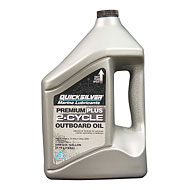Two-stroke vs. four-stroke engines
 The biggest mechanical difference between two and four-stroke motor is in the internal processes. A two-stroke motor completes four different internal processes – intake, compression, power and exhaust – in two strokes of the piston, while the four-stroke completes those same four processes in four strokes.
The biggest mechanical difference between two and four-stroke motor is in the internal processes. A two-stroke motor completes four different internal processes – intake, compression, power and exhaust – in two strokes of the piston, while the four-stroke completes those same four processes in four strokes.
Because the two-stroke is operating at a higher rate, it tends to be more powerful than a four-stroke motor. The two-stroke motor is lighter, simpler to build, and is popular in chainsaws, outboard motors, jet-skis, and many others. The two-stroke motor operates best on two-cycle oil. It is, however, extremely inefficient and is an excessive polluter due to the amount of unused fuel that escapes through the exhaust port.
The four-stroke motors have to meet emissions and fuel standards, and are the environmentally-friendly choice of the two. Four-stroke motors cost less, and are cheaper to run and maintain. They are heavier than two-stroke motors, though, which may restrict in what capacities they can be used.

